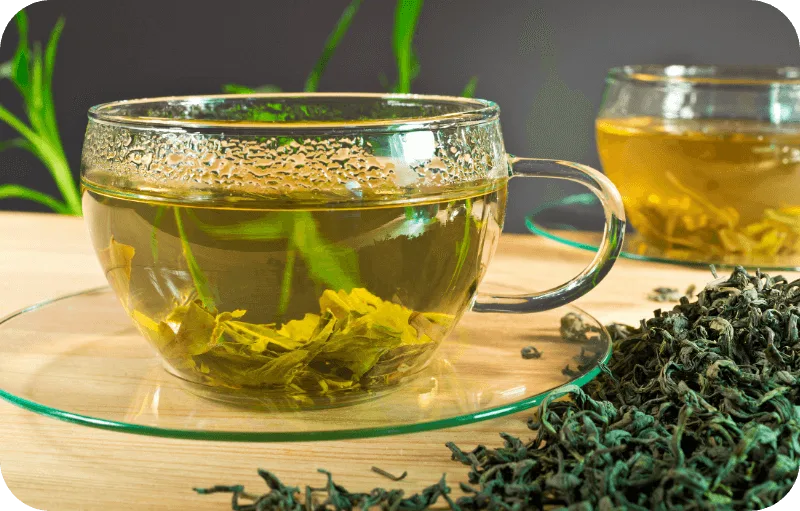5 Surprising Life Hacks For Shredding Body Fat

Don’t worry, this isn’t going to be your typical, conventional article telling you what you already know and have likely heard over and over again.
Losing fat doesn’t have to be a daunting task of strict diets and intense workouts.
With a few unconventional life hacks, you can pave the way to a leaner, healthier you without feeling deprived or overwhelmed.
That being said, of course self-discipline is essential when it comes to achieving anything that you want in life, including weight-loss.
But here we are going to cover some useful and easy life hacks that you may not have used before, to help aid you in the process of shedding those extra pounds:
1. Chew Slowly and Thoroughly
You will often find that you still feel quite hungry after eating a large plate of food, especially if you struggle with insulin resistance or blood sugar spikes.
But this feeling of hunger doesn’t actually mean that your body requires more food, it just means that your satiation levels haven’t kicked in.
This is why taking a longer time to eat by chewing thoroughly is actually extremely beneficial as you are much less likely to reach for more food when your body’s satiation levels have kicked in.
Instead of mindlessly devouring your meals, practice the art of chewing slowly and thoroughly. This not only aids digestion but also allows your brain to register fullness signals more effectively.
Try counting your chews per bite to ensure you’re savouring each mouthful. You will feel much more satisfied and full by the end of your meal by implementing this.
2. Sip on Green Tea Throughout the Day
Green tea is not only refreshing but also packed with antioxidants known as catechins, which can help boost metabolism and promote fat burning.
Sip on a cup in the morning and throughout the day to reap its benefits. Here’s a detailed list of exactly how adding green tea to your routine will aid fat loss:
Metabolism Boost:
Green tea contains catechins, particularly epigallocatechin gallate (EGCG), which are natural antioxidants. These compounds have been shown to increase metabolism. By boosting metabolic rate, green tea can help the body burn more calories, even at rest.
Enhanced Fat Oxidation:
The catechins in green tea have been found to promote the oxidation (breakdown) of fat. This means that the body is more efficient at using stored fat as an energy source, which can contribute to overall fat loss.
Calorie Burning:
Some studies suggest that green tea may increase calorie burning during both exercise and rest periods. This effect, although modest, can add up over time and support weight management efforts.
Appetite Regulation:
Green tea has been shown to have mild appetite-suppressing effects. Drinking it before meals may help you feel fuller, which can lead to consuming fewer calories overall.
Caffeine Content:
Green tea contains caffeine, albeit less than coffee. Caffeine is known to stimulate thermogenesis (heat production) and fat oxidation, further contributing to its potential role in weight management.
Antioxidant Benefits:
Beyond weight loss, green tea offers numerous health benefits due to its high antioxidant content. These antioxidants can protect cells from damage and support overall health, which is crucial for maintaining an active lifestyle conducive to weight loss.

3. Turn Your Shower into a Cold Blast
Cold showers might not sound inviting, but they can stimulate brown fat, a type of fat that burns calories to generate heat.
Start with warm water and gradually decrease the temperature for a brief cold blast to kickstart your metabolism. Here’s how cold showers truly help:
Activation of Brown Fat:
Cold exposure can stimulate the activation and production of brown adipose tissue (brown fat) in the body. Unlike white fat, which stores calories, brown fat burns calories to generate heat. This process, known as thermogenesis, increases energy expenditure and can contribute to fat loss over time.
Increased Metabolism:
Cold showers can temporarily boost metabolism. When exposed to cold temperatures, the body works harder to maintain its core temperature, leading to an increase in metabolic rate. This heightened metabolism can help burn more calories throughout the day, supporting weight management efforts.
Improved Circulation:
Cold showers can improve blood circulation by causing blood vessels to constrict and then dilate. This process, known as vasoconstriction followed by vasodilation, enhances blood flow to various parts of the body. Improved circulation can aid in the delivery of nutrients and oxygen to muscles, promoting overall health and potentially enhancing exercise performance.
4. Embrace Spicy Foods
Spicy foods containing capsaicin, like chili peppers, can temporarily increase your metabolism and reduce appetite.
Here’s how incorporating spicy dishes into your meals will rev up your calorie-burning potential:
Increased Metabolism:
Spicy foods contain compounds like capsaicin, which give them their heat. Capsaicin has been shown to temporarily increase metabolic rate. This effect, known as thermogenesis, causes the body to burn more calories both during and after consumption of spicy foods.
Appetite Suppression:
Capsaicin and other spicy compounds can help suppress appetite. Consuming spicy foods can lead to a feeling of fullness and satiety, which may reduce overall calorie intake. This can be particularly beneficial for controlling portion sizes and curbing cravings for unhealthy snacks.
Improved Fat Oxidation:
Studies show that capsaicin enhances fat oxidation, the process by which the body breaks down fat for energy. By promoting fat breakdown, spicy foods can potentially aid in reducing body fat over time when combined with a balanced diet and regular exercise.
Enhanced Exercise Performance:
Spicy foods increase endurance and exercise performance. Capsaicin can improve blood circulation and oxygen delivery to muscles, enhancing stamina and enabling more effective workouts. This contributes to greater calorie burn and fat loss through physical activity.
Blood Sugar Regulation:
Spicy foods, particularly those containing capsaicin, have been shown to improve insulin sensitivity. Better insulin sensitivity can help regulate blood sugar levels and prevent spikes that contribute to fat storage. Stable blood sugar levels are important for overall metabolic health and weight management.
Thermic Effect of Food (TEF):
The consumption of spicy foods increases the thermic effect of food—the energy expenditure required for digestion, absorption, and metabolism of nutrients. Foods with higher TEF require more energy to digest, leading to a higher calorie burn compared to foods with lower TEF.

5. Try Fasting for Improved Insulin Sensitivity
Intermittent fasting isn’t just a trend; it can help improve insulin sensitivity and promote fat loss.
Experiment with fasting windows that suit your lifestyle, such as skipping breakfast or having an early dinner, to optimise your body’s fat-burning capabilities.
Here’s exactly how it helps:
Increased Fat Oxidation:
During fasting periods, especially extended fasts of 12 hours or more, insulin levels drop, which triggers the body to start breaking down stored fat for energy. This process, known as fat oxidation, can lead to a reduction in body fat over time.
Improved Hormone Sensitivity:
Intermittent fasting has been shown to improve insulin sensitivity. When insulin sensitivity is enhanced, cells are better able to take up glucose from the bloodstream, which can reduce insulin levels and promote fat burning.
Enhanced Metabolic Rate:
Studies have shown that intermittent fasting can increase metabolic rate. This may be due to changes in hormone levels and increased sympathetic nervous system activity, which can lead to greater calorie expenditure even when not actively exercising.
Preservation of Lean Muscle Mass:
Unlike continuous calorie restriction diets, intermittent fasting has been shown to help preserve lean muscle mass while promoting fat loss. This is partly due to the maintenance of protein intake during feeding periods and the hormonal environment that supports muscle preservation.
Reduction in Caloric Intake:
Intermittent fasting can naturally lead to a reduction in overall caloric intake. By limiting the window of time in which food is consumed, individuals may find it easier to control portion sizes and avoid mindless snacking, which can contribute to weight loss.
Cellular Repair and Autophagy:
During fasting periods, the body initiates cellular repair processes, including autophagy. Autophagy is the process by which cells remove damaged components and recycle them for energy. This can have profound effects on overall cellular health and longevity.
Regulation of Appetite Hormones:
Intermittent fasting influences appetite-regulating hormones such as ghrelin (hunger hormone) and leptin (satiety hormone). Some individuals report reduced cravings and improved hunger control after adapting to intermittent fasting schedules.
Simplicity and Sustainability:
For many people, intermittent fasting is easier to adhere to compared to traditional calorie restriction diets. It simplifies meal planning and eliminates the need for constant calorie counting, making it a sustainable approach to long-term weight management.
Conclusion
Incorporating any of these unique strategies into your daily routine can make a significant difference in your weight loss journey.
By focusing on sustainable habits that fit your lifestyle, you’ll find that achieving and maintaining a leaner physique becomes more attainable and enjoyable.
Embrace these unconventional tips, stay consistent, and celebrate the progress you make towards your healthiest self.



